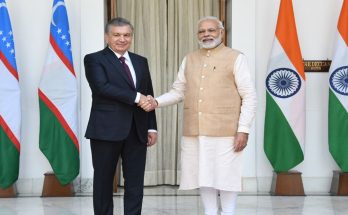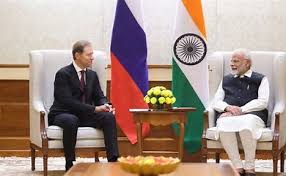| The 1857 Indian revolt (aka the Indian Mutiny) was sparked by a perception, circulated widely in an organised, albeit ingenious manner, that the British were secretly trying to subvert the religious beliefs of Hindu and Muslim soldiers. Once the perception took hold, it was the lightening rod which channeled grievances against the British Raj, accumulated over 100 years, into horrendous violence on both sides. To the credit of the Raj, it also resulted in improved governance practices and objectives.Almost 158 years later, a similar event happened in India last week. Young, upwardly mobile, Netizens-citizens who live through the Internet revolted online. The cause was a perceived, veiled attack by the Telecom Regulatory Authority of India (Trai) on the principle of “Net Neutrality”, concealed in its consultation paper on regulating over the top (OTT) services.A hilarious video by All India Bakchod, lampooning the “evil” telecommunication companies (telcos) and the telecom regulator, making the former out to be money-grabbing machines and the latter a bumbling collaborator, went viral.The activists of “Save the Internet” campaign pitched in. They helpfully put up on their website an easy-to-read list of answers to the complex questions that the Trai had sought comments on. All that Netizens had to do was click and the app automatically sent their “opinion” to the Trai — 800,000 of them clicked with a vengeance, flooding the Trai with paperwork that will take weeks to sort through. The consultation ends on April 24.Like the 1857 revolutionaries, the numbers of the revolting 2015 Netizens are limited. Net penetration is a low 20 per cent in India and broadband access (necessary for the “value-added high-speed services” like movies and chat, made available in the last decade by start-ups) is limited to less than 10 per cent of the population. Facebook estimates it has 100 million users out of a population of 1,230 million. Unrestricted and universal access to these services for Netizens, without interference by the telcos (the six big ones are Bharti Airtel, Vodafone, Idea Cellular, Reliance Communications, Tata Teleservices and Reliance Jio) managing the connector pipes, was at the heart of the struggle. The fuss was really around an innovative deal being cooked between Bharti Airtel, India’s largest mobile operator, and Flipkart, the hugely successful e-retailer. The broad idea was that Bharti Airtel would not charge users to access the Flipkart site, thereby reeling more users in, whilst Flipkart would directly pay Bharti Airtel for the traffic to their site. It seemed a “win-win”. Flipkart customers would get cheaper access, Flipkart hoped to get additional “hits” and hopefully more people buying from its site, and Bharti Airtel hoped that after shopping at Flipkart, Netizens would spend some more time surfing, thereby enhancing Bharti Airtel’s revenues. What was unclear was whether Bharti Airtel was also committed to either block or slow down access to competing e-retailers, like Snapdeal or Amazon, amongst others. If the deal was simply for Bharti Airtel to permit free access to Flipkart in exchange for a block payment, with no accompanying blocking of competition, the fuss was much ado about nothing. But Netizens suspected the worst. They feared that this was just the beginning. “Evil”, large telcos, like Bharti Airtel, were conspiring to “carve up” the Net into exclusive-access, paid zones and, thereby, compromise the “free roam across the Net” Netizens are used to — exactly like one can walk through a mall for free, though you pay to park. Some of the ire drew its ammunition from the ongoing campaign for “Net Neutrality” in the US, which President Barack Obama has endorsed. It did not help that, unsettled by the fuss kicked up by Netizens, the Times Group and NDTV pulled out of a proposed consortium with Reliance Communications and Facebook to form a new company — Internet.org — in the communication space, citing their commitment to maintain Net Neutrality. This strengthened the impression that what they had been hatching earlier would indeed have compromised Net Neutrality. The garbled reaction of the government confirmed the Netizens’ worst fears. Telecom minister Ravi Shankar Prasad reiterated that the government was committed to extending the Net to all Indian citizens — a “motherhood statement” that did nothing to salve the agitated Netizens. Trai’s response was even more ponderous. Trai chairman Rahul Khullar instead of taking the criticism in good spirit, blamed the “Netizen noise” on a war between “a media house and a corporate”. Appearing, thereby, to be trying to undermine the sincerity of the Netizens’ concerns. The use of social media to clear the air and counter the perception of crony capitalism was ignored by the government, quite unlike what the Bharatiya Janata Party is generally considered capable of. Prime Minister Narendra Modi was away on state visits to three countries; finance minister Arun Jaitley was in the US for the World Bank spring meetings and the lack of depth on the bench showed. Ideally, the government and the Trai should have been on the news channels, Twitter and Facebook, assuring everyone that the Trai consultation paper does not communicate a decision and is meant to generate discussion. They could have illustrated how the department of telecommunications (DoT) and the Trai were aware of and could deal with the risks of cartels, market power and crony capitalism. But there was only the creepy sound of stony silence and evasive answers emerging from Sanchar Bhawan. Let us unravel the hype from the facts. First, in the absence of pervasive and effective oversight and supervision of the manner in which telcos manage “connector pipes”, there is a possibility that implicitly or explicitly a telco may discriminate between users accessing the Net for services or between suppliers of these services. The key question is, does the Trai or DoT have systems in place to monitor the manner in which “data packets” are transmitted through telco pipes so that unreasonable and competition retarding discrimination can be identified and penalised? If active and effective oversight is possible, any attempt at blocking competition can be penalised. Second, unlike the electricity sector, the success of telcom has rested on successful liberalisation of the market. User tariffs are no longer set by the Trai since there is sufficient competition in the market. This has worked well as witnessed by the decline in access charges over the last decade. There is little reason to fear that things will change. If anything, the February 2015 auction for spectrum showed that competition has intensified. The telcos bid very high prices for retaining their expiring spectrum allocations. It is possible that they had factored in the possibility of enhancing revenues via the deals with content and app suppliers now out in the public gaze. Whilst dealing effectively with public outrage, credibility counts. The credibility of government took a knock last week with Netizens declaring a love-all win versus government and big business. Third, consider that 80 per cent of Indians remain unconnected to the Net. The government does not have the resources to fund their ambitious interconnection plans. It levies a five per cent charge on the revenues of telcos to finance the Universal Service Obligation Fund, which will connect all the 675,000 village panchayats with fiber-based broadband, but progress is lagging. Market determined Net usage charges of the telcos in India are the lowest in the world today. Do telcos have the revenue streams to provide last mile connectivity? This remains unclear till Trai publishes an analysis of the marginal cost of connecting the rest of India versus telco revenues. Fourth, Netizens are a conflicted lot. They value technical innovations, like transaction cost reducing apps, but fear strategic business arrangements between telcos and Net service suppliers, which have similar objectives. Innovation thrives in lightly regulated markets, but someone also needs to shut the door on “free riders” who do not pay but get to use the capacity in connector pipes created by telcos. WhatsApp can provide free messaging service to Indian users because its entry costs are negligible. It “free rides” over the existing telecom pipes accumulating users, which in turn generate valuable and potential advertising revenue for it. Good for consumers, you would say, and good for WhatsApp, to be so clever. But this joy ride works only till there is surplus capacity in the connector pipes of the telcos. Fifth, someone has to pay for the additional capacity in connector pipes, required to provide high-speed Net services like movies, music and high-resolution digital imaging. This is the conundrum facing the Trai and the government. Netizens have no answers to the question, who should pay for additional connector capacity. The mantra of Net Neutrality would require the user to pay for new capacity since telcos then become mere managers of “dumb pipes” conveying data as it comes and recovering costs from users. No one, least of all Netizens, can stomach an increase in Net usage charges. The trade-off is clear. Either user charges must increase or the telcos must have the business flexibility to evolve revenue-enhancing deals with suppliers of Net services. Ending “free riding” is in everyones’ interest. (The writer is an Adviser to Observer Research Foundation, Delhi) Courtesy: ORF – Net neutrality: A threat to PM Modi’s vision? |
Author Profile
- India Writes Network (www.indiawrites.org) is an emerging think tank and a media-publishing company focused on international affairs & the India Story. Centre for Global India Insights is the research arm of India Writes Network. To subscribe to India and the World, write to editor@indiawrites.org. A venture of TGII Media Private Limited, a leading media, publishing and consultancy company, IWN has carved a niche for balanced and exhaustive reporting and analysis of international affairs. Eminent personalities, politicians, diplomats, authors, strategy gurus and news-makers have contributed to India Writes Network, as also “India and the World,” a magazine focused on global affairs.
Latest entries
 India and the WorldNovember 26, 2025G20@20: Africa’s Moment – The Once and Future World Order
India and the WorldNovember 26, 2025G20@20: Africa’s Moment – The Once and Future World Order DiplomacyOctober 4, 2025UNGA Resolution 2758 Must Not Be Distorted, One-China Principle Brooks No Challenge
DiplomacyOctober 4, 2025UNGA Resolution 2758 Must Not Be Distorted, One-China Principle Brooks No Challenge India and the WorldJuly 26, 2025MPs, diplomats laud Operation Sindoor, call for national unity to combat Pakistan-sponsored terror
India and the WorldJuly 26, 2025MPs, diplomats laud Operation Sindoor, call for national unity to combat Pakistan-sponsored terror India and the WorldJuly 25, 2025When Fire Ends, Diplomacy Begins
India and the WorldJuly 25, 2025When Fire Ends, Diplomacy Begins








